Doping In MMA – How Much Of An Advantage Does It Give A Fighter?
Performance-enhancing drugs (PED’s) are the mosquito of MMA. They ignorantly buzz around in the background evading capture but when finally caught, another incessant buzz emerges as the authorities appear powerless to prevent it from sucking the integrity out of the sport.
In recent years, the US Anti-Doping Agency (USADA) have made huge efforts to extinguish the mosquito and eradicate the use of PED’s. They have clearly outlined prohibited substances in and out of MMA competition and enforced compulsory random testing for fighters. A positive test or failure to produce a sample will result in a ban of varying length.
Back in the early days of the UFC, it was common for a fighter to take performance enhancing substances. With barely any testing, the use of PED’s was rife and not even well-hidden. Fighters sought a competitive advantage and got away with it. Now, with stricter regulations and testing with lengthy bans, the vast majority of MMA promotions are slowly but surely becoming an even and clean playing field.
We wanted to investigate how much illegal substances have actually enhanced performances. We have gathered data on every notable fighter that has been sanctioned and have compared their record before and after their ban, along with providing a table of information on each fighter. This is just for visual purposes and does not imply that fighters were using PED’s all the way up until their ban, and also does not imply that they have been clean after the ban for that matter.
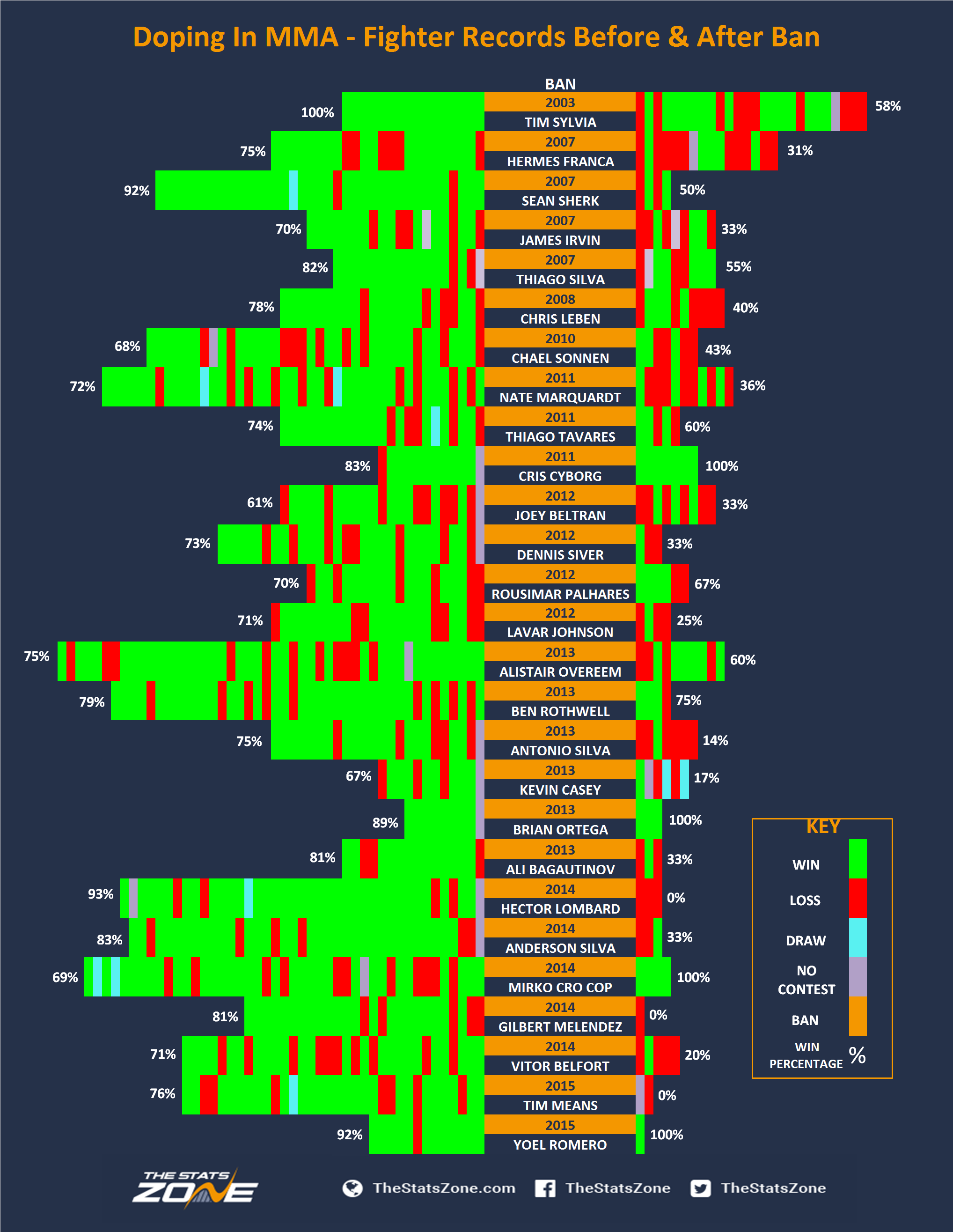

So as you can see, there is a stark difference in the performance of these fighters before and after they were caught and subsequently sanctioned. The average win percentage before the ban was 78% and after it dropped to a staggering 45%. Just by glancing at the amount of losses after their ban and the drastic decrease in win percentages, surely proves that doping gives you a significant advantage. What must be taken into account of course, is the difference in sample sizes, as there have been far more fights in the ‘pre-ban’ category compare to ‘post-ban’, potentially skewing the results somewhat.
There are also other factors to consider…
Caveats
Shelf-life
MMA fighters have a very short shelf-life compared to other athletes. Take Anderson Silva for instance; his form already started to deteriorate before he got caught but he was 37-years-old at the time, which is a long innings for a fighter competing at the highest level. The harsh reality for a fighter is that their level of performance can significantly decline with age. Constant blows to the head and debilitating injuries throughout a career make them very vulnerable as they get older, especially as the standard of competition continues to rise in MMA.
So you could say it is natural for a fighter to lose more fights as they get older? Yes, but by looking closely at their records, the form of several fighters dropped suddenly after their ban and the difference in win percentage makes it hard to argue that it is just a coincidence.

2016 - Anderson Silva (right) receiving his third UFC loss against Michael Bisping.
Ring-rust
Ring-rust is also an issue for fighters. It can be tremendously difficult for a fighter to resume any kind of form when sidelined for months/years at a time, whether it be due to injury or a lengthy ban. There is no room for error in combat so when not competing for a significant amount of time, they will not return the same both mentally and physically, which may explain the dip in form or lack of confidence at least when returning to competition. There are fighters, however, who have not seemed to display any ring-rust, such as Dominick Cruz who took years out of the game due to several injuries but still came back to reclaim his belt against the highest calibre of opponent in TJ Dillashaw.
We can only speculate why performance levels may drop in a fighter. In all likelihood, these factors do contribute but are mainly an excuse to resort to PED’s, so when their form drops immediately after a ban it is all too easy to assume they have previously been aided by PED’s.
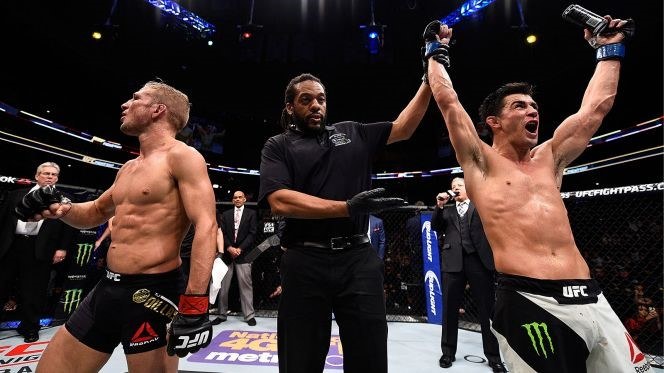
One of a kind – Dominick Cruz (right) reclaiming his belt against TJ Dillashaw
How long have they been dirty?
We also do not know how long fighters were using PED’s. We only know that they tested positive on the test that led to the ban. Effectively, they could have been clean for their entire career and got caught on their first instance of doping. It is so hard to tell and every fighter differs – and every substance for that matter. There have also been a couple of occasions when fighters tested positive but claimed that legal substances they consume were actually contaminated with illegal substances. Tim Means and Yoel Romero had their bans shortened as they were deemed not to have known they were consuming a banned substance. This is a very complex issue in sport that is only just being addressed, so there is always going to be grey areas.
So how can we tell if a fighter is doping?
Blood/urine tests are the only definitive proof and is why the sport relies so much on governing bodies such as USADA to eradicate the dopers. Occasionally, we can see physical differences in a fighter’s physique that would suggest they are not on the most natural of diets. There are many fighters that are naturally muscular, but abnormal levels of Human Growth Hormone and Testosterone for example, can turn well-conditioned athletes into chiselled beasts. They can put on substantial muscle mass, increasing power as well as their speed. Vitor Belfort and Alistair Overeem are the best illustration of how the body can change when coming off these substances:
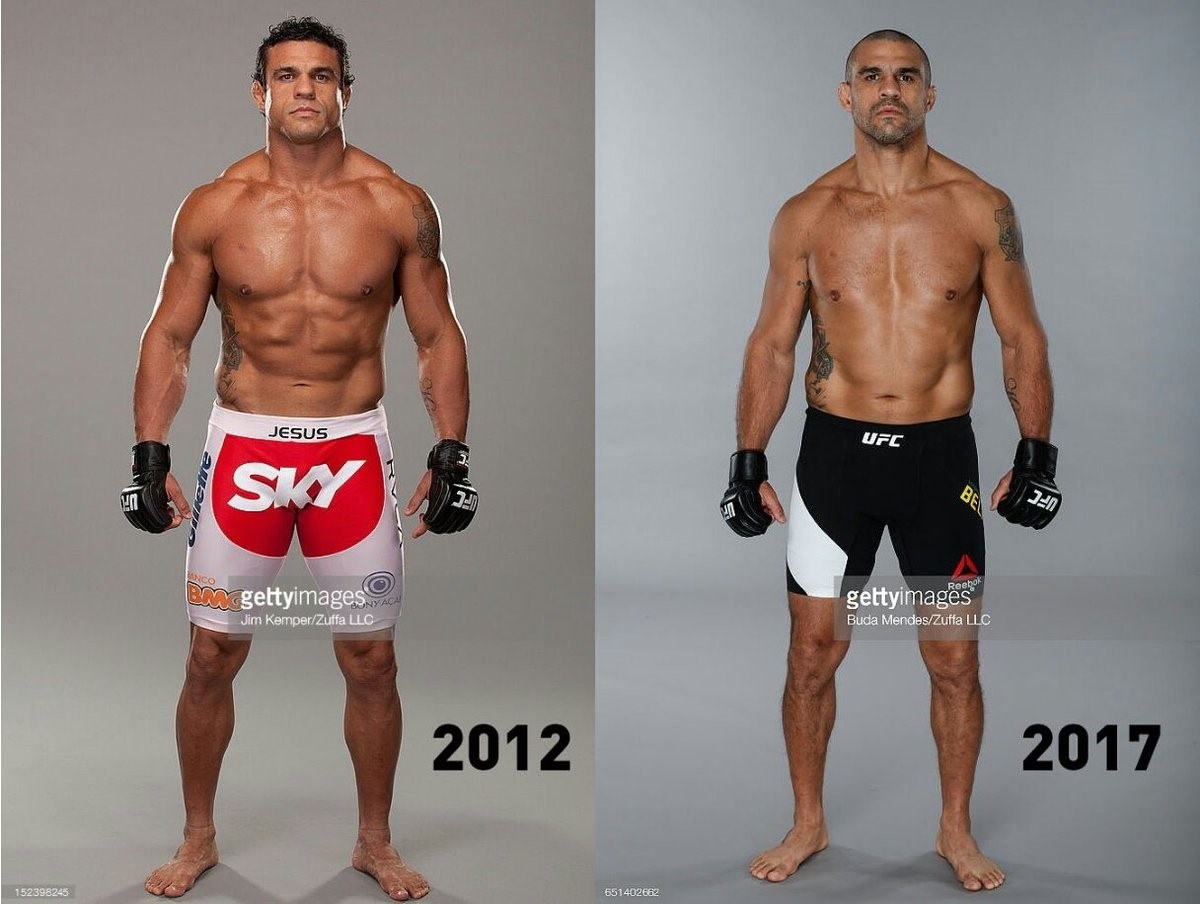
Vitor Belfort: Before (2012) and after ban (2017) - Getty Images
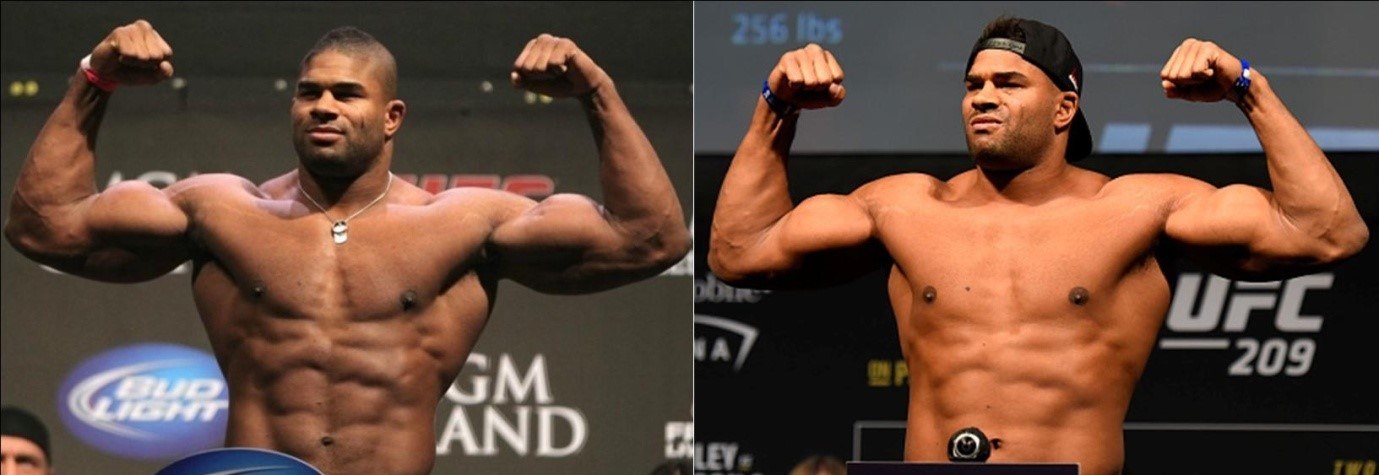
Alistair Overeem: Before (2011) and after ban (2017)
As mentioned, every fighter and substance is different and it is extremely hard to know when/how long they were taking PED’s as well as the effect they had on their performance. In general, the ‘before and after records’ suggest that a fighter clearly has an advantage when sailing on the ship of steroids. However, there appear to be exceptions:
Exceptions?
Cris Cyborg
Cyborg has won every fight since testing positive for Stanozolol after her victory over Hiroko Yamanaka in 2011. She is clearly an impressive specimen with elite level skills, racking up a terrifying 15 knock-outs from her 17 wins. However, she has more power, muscle mass and speed than virtually any female fighter in the world, and is quite frankly on a different level to her competition. Her performances since her ban though, have, if anything, improved – as she has convincingly won all seven fights since. Although her physique has toned down somewhat, she was flagged for a potential violation by USADA in December 2016. However, she was granted retroactive therapeutic use exemption, thus making her eligible to compete.
Exemptions create a whole new controversial area where fighters are allowed to take illegal substances for medical reasons. Whether this is fair or not is up for debate.

Left: Pre-ban (2011 v Hiroko Yamanaka) Right: Post-ban (2016 v Lina Landsberg)
Mirko Cro Cop
In 2015, Cro Cop received a ban for testing positive for Human Growth Hormone and his UFC contract was subsequently terminated. However, since his ban, he has also won every fight since. Having said that, these fights took place with Japanese promotion Rizin, where fighters are not as stringently tested as they are under the UFC umbrella.
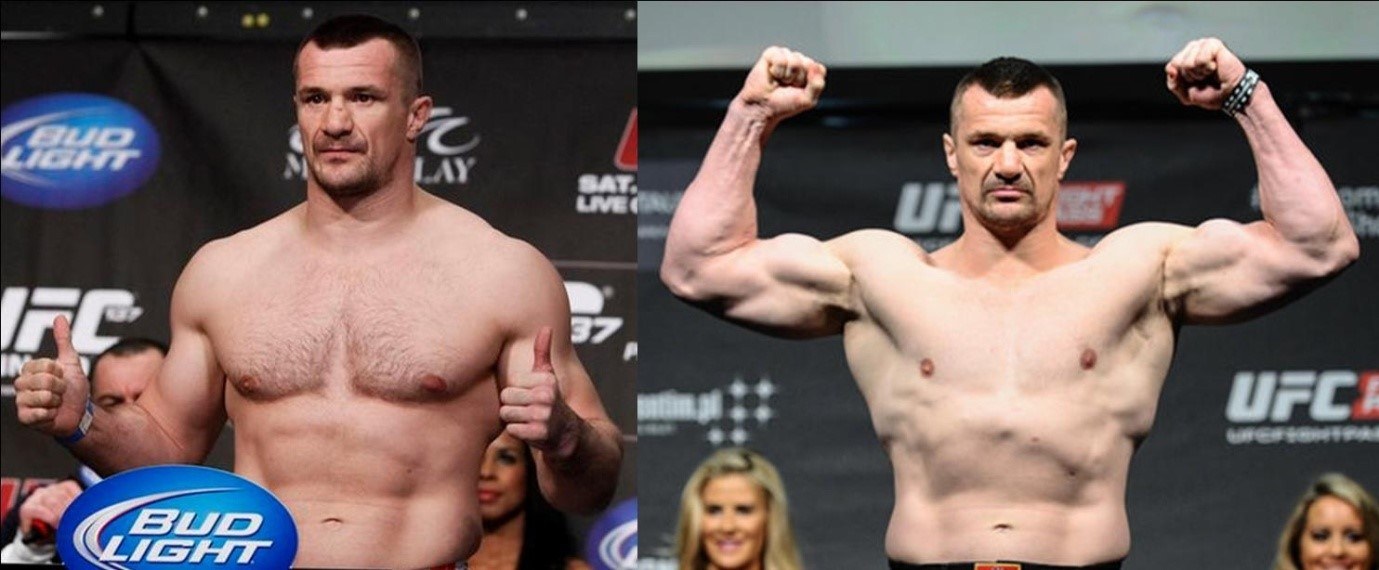
Left: Pre-ban (2014 v Gonzaga) Right: Post-ban (2016 Rizin tournament)
Brian Ortega
Another fighter who has enjoyed an unbeaten streak since his ban. Ortega tested positive for Drostanalone after his victory over Mike De La Torre in 2014, but this is an odd case. He was only 22-years-old when he got caught after his UFC debut and certainly his physical appearance at the time was not typical of fighter under the influence of PED’s. He is a gifted and skilled athlete whose career has flourished since his return. Undoubtedly, resorting to doping is something he will always regret.
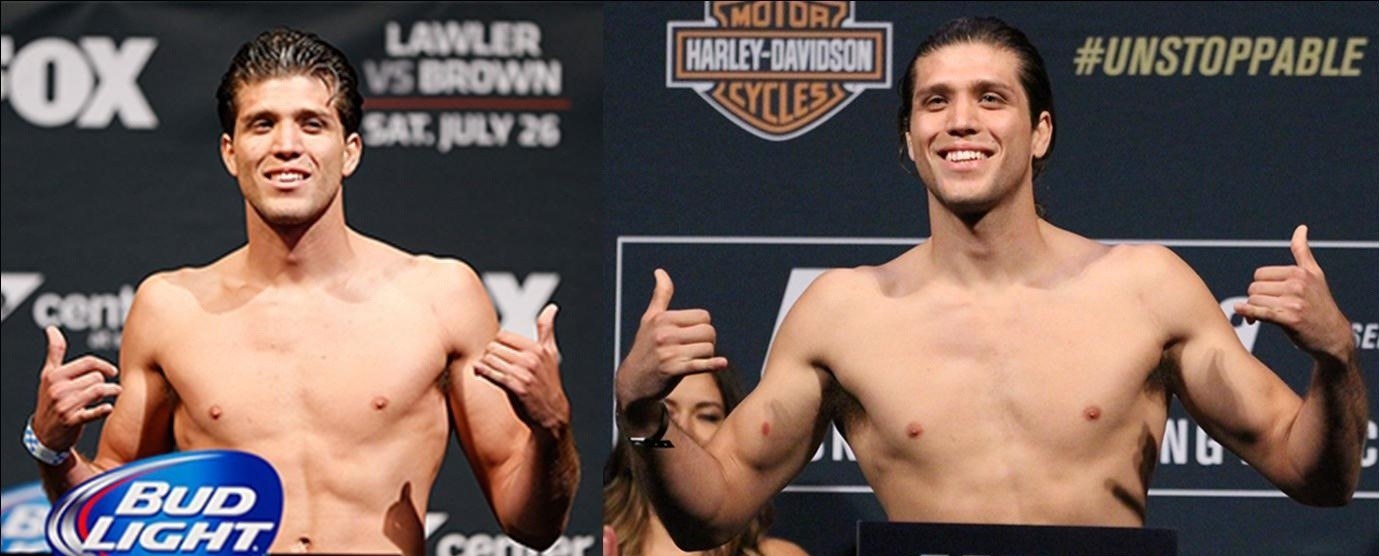
Left: Pre-ban (2014 v Mike De La Torre) Right: Post-ban (2016 v Clay Guida)
Unmentioned Fighters
There are a few fighters that we have not mentioned. Showing the records of repeat offenders such as Josh Barnett, Chael Sonnen and Stephen Bonnar would not give an accurate representation of how PED’s affected their performance as there is no way of telling when they were clean. There are also a batch of notable fighters who are currently serving a suspension/completed their ban but yet to return. See below for details:
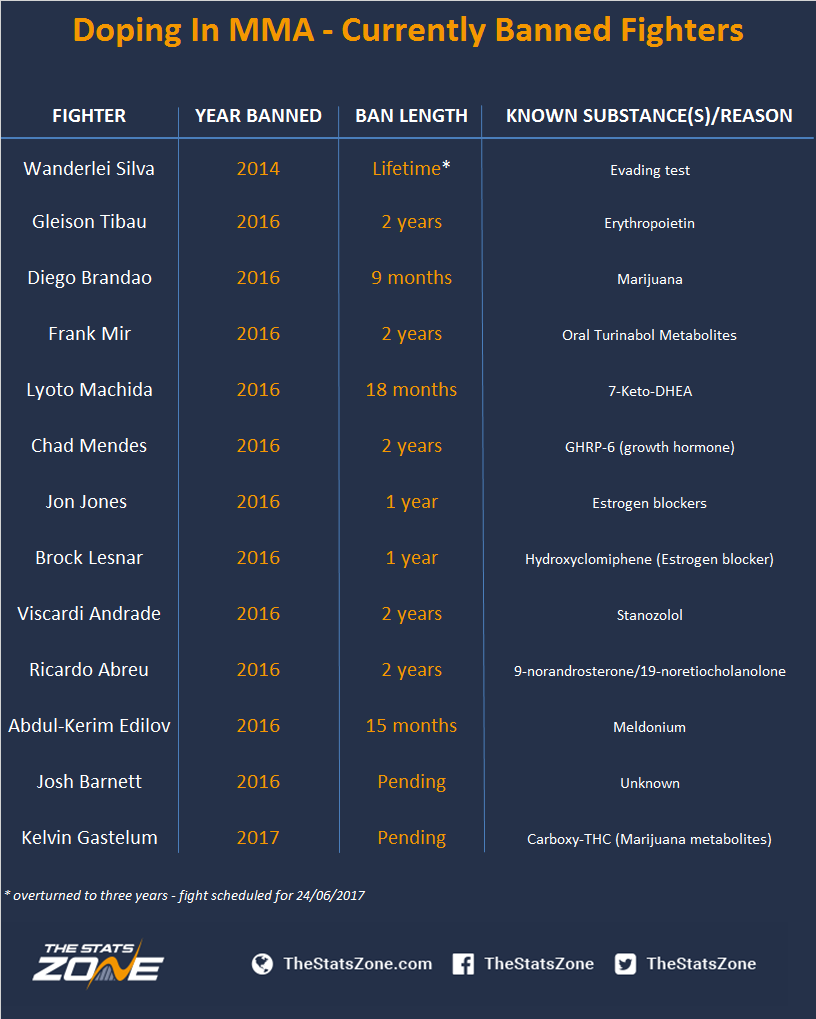
We will be sure to keep a close eye how these fighters fair on their return.
So do fighters have an advantage when using PED’s?
Of course they do. This was never a serious question but an excuse to discover quite how much of an advantage they get and illustrate the difference in individual cases. Although doping in MMA is such a grey area, we are becoming more informed and importantly, more efforts are being made to clean up the sport thanks to organisations such as USADA and the UFC. Lengthy bans are a must as it can have a huge impact on the career of a fighter. They seem to be making a difference but more appropriate sanctions still need work.
At the end of the day, the UFC should be applauded for cracking down on the plague that is doping, and their approach is something which other sports (and other MMA promotions) could really learn from. Similarities can be drawn to Cycling, which has encountered its own problems with PED’s in recent years but whose authorities have taken a strict approach to testing and competition bans.
The bans imposed on MMA fighters are a good start, but steroids can have permanent effects on the human body. Although fighters may be clean, they have already reaped the benefits of PED’s – physically as well as their fight record – so stricter sanctions have to be considered in the interest of making the sport fairer.
There will always be parts of the world and MMA promotions that do not impose any strict testing. This allows freak shows and behemoths with unsettling vascularity and strength to compete in combat against other human beings, which borders on the inhumane. Of course, there is an argument as to whether this is even a bad thing or not; MMA is a sport with promotions that solely want to provide entertainment and generally that is all the fans want. We can let these mosquito’s buzz in bliss but as long as the top organisations are doing all they can to promote fair competition, the sport of MMA will continue to grow.










